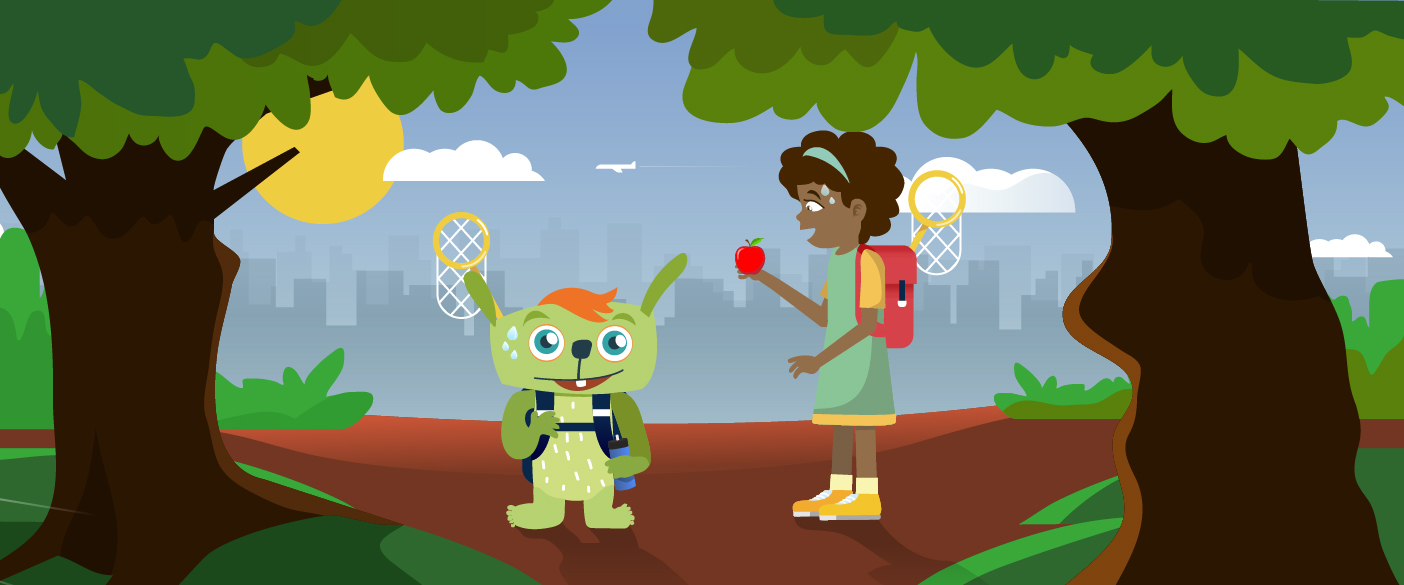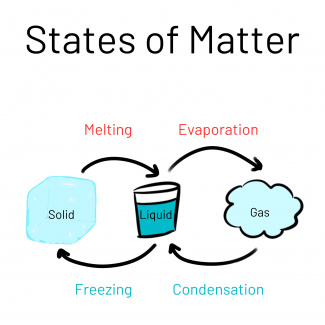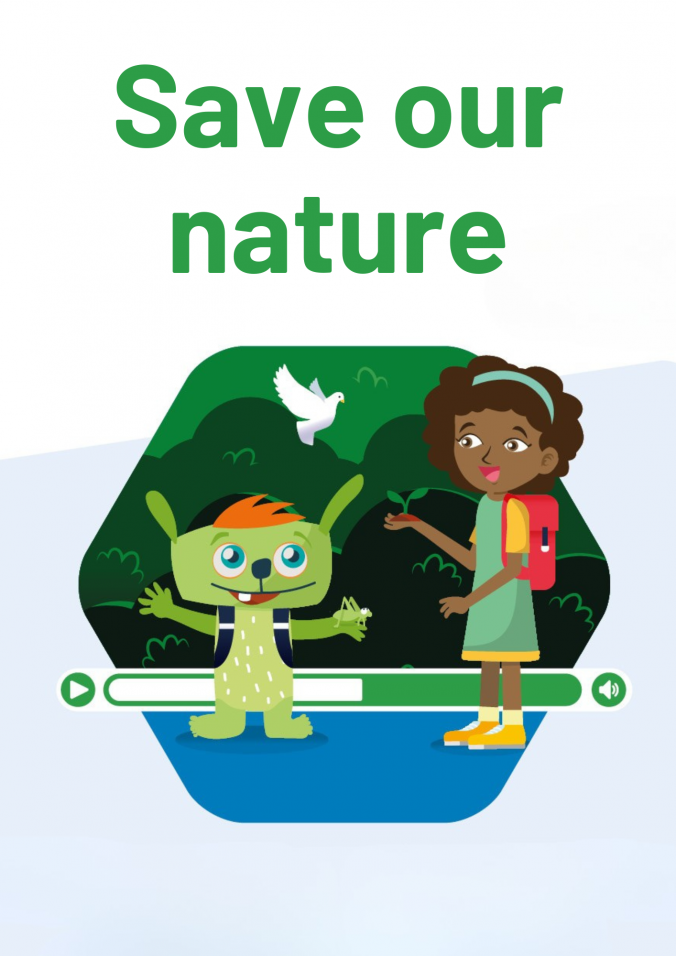How does Global Warming Lead to a Rising Sea Level?

Overview
Overview
Keywords: temperature, water, ice, sea ice, melting, sea level, states of matter, changes of state
Subjects: science, physics, mathematics, geography
Age group: 6-10 years old
Difficulty level: ● ○ ○ (easy)
![]()
![]()
![]()
This experiment is part of the unit "Climate Action" written by: Esra Aksoy (TR), Rebecca Mudde (GB), Rute Oliveira (PT), Anastasia Papakonstantinou (GR)
Planet Earth is undergoing significant changes of its climate due to human activities which emit huge amounts of greenhouse gases into the atmosphere. These human-made greenhouse gases are causing the average temperature of the planet to rise. Although these greenhouse gases are essential for life on Earth, an excess causes the average temperature of the planet to rise. As a result, we are seeing melting ice sheets and glaciers, contributing to a rising sea level.
This video tutorial can be easily incorporated into science and geography classes. Teachers can use it as a basis for discussions and activities centred on global warming, sea level rise, and sustainable solutions.
This project is interdisciplinary, integrating concepts from
- mathematics (presenting results and analysing data),
- communication skills (communicating and writing about environmental issues),
- social studies (understanding the impact of climate change on different regions and communities),
- geography (recognising the various regions of the planet and their characteristics),
- physics (physical states of matter and changes of physical states).
Students will develop critical thinking skills, communication abilities, and environmental consciousness.
The model experiment shown allows us to discuss that our actions do not only have an impact on our region. Melting of ice in one given region affects the entire planet.
The experiment
Required materials
- a transparent glass container
- play dough (or rocks)
- ice cubes
- a glass with water
- a permanent marker
- a ruler
- a stopwatch
- a notepad and a pencil
- small branches (e.g. rosemary) to symbolise trees and wooden cubes or cork stoppers to symbolise houses.
Experiment guide
Prepare enough ice cubes the day before the experiment.
This activity can be performed by the teacher for the class but depending on the age and the autonomy level of the students, they can perform the experiment themselves in small groups.
- Place play dough (or rocks) on opposite sides in a transparent container to represent two distinct regions. The play dough can be made using flour and water (see recipe below).
- Add water to the container to represent the ocean.
- Use small objects that represent trees and houses. Small branches picked by the students representing trees (small rosemary branches were used in the video), small wooden cubes representing houses, or cork stoppers that the children may have previously painted can also be used. These objects will be useful in the model to show that fauna, flora and dwellings are at risk of being inundated. Place them on one side of the container, on the play dough (or on the rocks).
- Add the ice on the other side of the container. The bigger the surface area of the container, the more ice you need to see the changes.
- Mark the water level on the container using a permanent pen.
- Use a stopwatch and record the rise in water level every 10 minutes using a ruler.
- Record the results in a table.
You can prepare your own play dough using this recipe.
- 2 ½ cups of flour
- 1 cup of salt
- 1 cup of water
- Food colouring (optional)
Preparation instructions:
- Mix the flour and salt together in a bowl.
- Mix the water with the food colouring in a separate container and stir (optional).
- Gradually pour the water mixture over the flour mixture and mix.
- You should get a smooth, elastic and non-sticky texture. If the dough is too sticky, add a little bit of flour.
Please be aware that you can’t keep the play dough for ever. After about a week microorganisms will start growing on it.
Note
Natural phenomena that occur around us are complex and difficult to replicate in the laboratory, therefore we use models. Models are simplifications of reality that allow us to understand what happens in the real world in a more accessible way.
Questions for students
Suggestions for questions that you could ask the students when the video stops.
Easier
- Why is the sea level rising?
- How does melting ice contribute to a rising sea level?
- Can you think of any things or activities that cause the sea level to rise?
- What are some effects of the rising sea level on coastal areas and communities?
- How does the rising sea level impact plants and animals that live near the coast?
- What actions can we do to prevent the sea level from rising too much?
More challenging
- How do scientists measure and study changes in sea level?
- Can you think of any long-term solutions to address the rising sea level and its impacts?
- Can you come up with a fun and innovative invention to help mitigate the effects of the rising sea level?
- If you could create a superhero who has the power to combat the rising sea level, what would your hero’s special abilities be?
- How can we involve our community and work together to reduce global warming and protect communities, animals and plants against a rising sea level?
The experiment with the result
States of matter
Much of what we can touch, see or feel is made of matter. We are surrounded by matter which can exist in different forms, called physical states: solid, liquid, and gaseous.
Solid
When matter is in the solid state, it has a well-defined shape and volume.
Liquid
In the liquid state, matter does not have a defined shape, it acquires the shape of the container it is kept in. It still has a specific volume. Liquids can flow and spread.
Gas
When matter is in the gaseous state, it has no definite shape or volume. Gases can spread freely and fill all available space.
Changes of state
Matter can change from one state to another when the environmental conditions change.
Melting happens when a solid is heated and turns into a liquid. For example, if we expose an ice cube to the sun, it melts and becomes liquid water. Melting can also happen by changing (lowering) the pressure.
Freezing is the opposite of melting. It happens when a liquid is cooled and turns into a solid. For example, when we put water in the freezer, it becomes solid and turns into ice.
Evaporation happens when a liquid is heated and turns into a gas. For example, when water is heated in a kettle, it turns into water vapor. Vapor is invisible for us. What we see coming out of the kettle are small water droplets from condensed vapor. Evaporation can also happen by changing (lowering) the pressure.
Condensation is the opposite of evaporation. It happens when a gas is cooled and turns into a liquid – for example, when droplets of water form on a cold mirror or window.

Ice can be found in various regions across the Earth, such as polar ice caps, glaciers, and frozen lakes. These ice areas play an important role in our planet's climate and environment. Climate change leads to an increase in the average temperature of the planet, which however small it is, leads to a decrease of ice mass on the planet.
Ice is mainly found at the North and South poles, as well as in places like Greenland and Patagonia, and as glaciers in mountains.
The South Pole region primarily contains land ice and some surrounding sea ice, while the North Pole region has mainly sea ice with an important amount of land ice, e.g. on Greenland. The Greenland ice sheet is the second largest ice sheet 1 after Antarctica. It represents a significant ice mass in the Northern hemisphere.
Land ice, particularly in Antarctica and Greenland, plays a significant role in the rising sea level. When continental ice melts, it has a substantial and immediate impact on sea level rise, whereas melting of sea ice has only a minimal and time-delayed effect. When the ocean gets warmer – due to melting sea ice – the water expands. The larger volume of the water causes the sea level to rise (see experiment “How does the Melting of Sea Ice or Land Ice affect the Sea Level?”).
How does this video link to sustainability?
Sustainability seeks to protect biodiversity and preserve healthy ecosystems. This project shows that climate change poses significant threats to biodiversity, leading to habitat loss and disruptions of ecosystems that support human well-being. Climate change threatens coastal cities and their population. This experiment highlights the urgency to protect these communities.
Sustainability involves collaboration and shared responsibility. This project motivates individuals to work together in supporting global initiatives and protecting vulnerable regions.
When we talk about the importance of decreasing our ecological footprint and develop STEM activities at school, we should think of how to achieve the smallest possible ecological footprint ourselves. This project uses recycled materials and in small quantities, so we are teaching by example.
STEM activities allow students to build and use models that help simplify complex natural phenomena such as climate change. By using a model and low-cost materials, we can explain how the melting of ice leads to a rising sea level.
Differentiated learning
Explore ideas how you can use this material in your class and adapt it to a group of various levels and learning styles.
Easier
Using a smaller container makes it easier to see the water level rising. If it is too difficult for the students to measure the water level, they can just mark the water level every 10 minutes with a permanent marker and observe the results qualitatively.
More challenging
Students may be asked to draw a graph with the data obtained. Afterwards they can carry out the experiment under different conditions, one on a cold day/in a cold place and another one on a hot day/in a hot place, and compare and discuss the results.
For students who are very involved in the project: They can be given the opportunity to make a video with their own results and present the findings to the school community and organise a debate. Furthermore, they can use Google Earth to investigate data on rising sea levels.
Career orientation
Which career options are linked to this experiment and how can you introduce them to your students?
By exploring this experimental activity on the consequences of melting land ice, children not only discover the impacts of climate change, but can also be inspired to consider future careers in environmental protection. This could be a good opportunity to spark interest in professions that seek to understand and find solutions to climate change, such as: environmental scientist, oceanographer and engineer.
Environmental scientist
An Environmental scientist works as a researcher to understand climate change patterns and sea level impacts.
What is an environmental scientist?
Environmental scientists are nature detectives! They study the Earth and all living things on it to understand how they work together. Their job is to protect the environment and make sure it stays healthy for plants, animals, and people.
What does a day in the life of an environmental scientist look like?
In their day-to-day work, environmental scientists take for example samples of soil, water and air in different places, such as forests, beaches, rivers, seas or cities. They then take these samples to the laboratory to analyse them with various instruments, such as microscopes. Once the analyses have been carried out, it's time to sit down at a desk and analyse the results, writing reports to share their findings with other scientists and institutions that benefit from this knowledge.
What responsibilities do they have?
Environmental scientists have high responsibilities. Their scientific results are fundamental to find solutions to climate change. It is important that their findings are communicated to policy makers and the general public so that they can protect the environment and the climate. They are trying to ensure that we can all live on a healthy planet.
Oceanographer
An oceanographer studies the oceans, including changes in sea level and the effects of climate change on marine ecosystems.
What is an oceanographer?
Oceanographers explore the sea! They try to protect marine living beings by investigating the characteristics of the oceans. They also study how climate change is affecting ocean life, ocean currents or the acidity of the water, which in turn affects life in the ocean.
What does a day in the life of an oceanographer look like?
Oceanographers can for example start their day with a dive in the ocean. With special equipment, they collect samples of water, animals and plants, which they analyse when they are back in their laboratory. Oceanographers use various devices that analyse parameters such as water temperature, the amount of oxygen in the water, or the speed and direction of currents to predict the behaviour of the oceans.
What responsibilities do they have?
Oceanographers have a very high responsibility, ensuring that the oceans remain healthy. To achieve this, they publish their research to the community and promote sustainable fishing practices. Oceanographers also study the evolution of marine life and ecosystems over time.
Engineer
An engineer is a person who applies scientific knowledge and mathematics to develop solutions for technical problems.
What is an engineer?
An engineer is an expert at solving problems. Engineers use their scientific knowledge to create solutions that make our world better! They design levees, dams, bridges, buildings, robots, computers, and much more. To solve complex problems, engineers must be very creative to turn ideas into reality and solve complex challenges.
What does a day in the life of an engineer look like?
An engineer's day can for example start by brainstorming with colleagues to develop a project. An idea might arise for creating, improving or maintaining a machine or a product. Engineers can also spend their days building something, just like you are an engineer when you build a paper airplane or a parachute to play with. Climate change requires people to solve problems. Engineers might find solutions to this great challenge.
What responsibilities do they have?
There are many areas in engineering. Civil engineers build bridges, roads or houses. Mechanical engineers create machines and ensure that they work well. Marine engineers can design and manage coastal protection systems such as dikes and barriers. Regardless of their specialty, engineers make sure everything runs smoothly and safely.
Further ideas
This activity can be developed with the support of other activities that are often part of the primary curriculum. Examples of these activities:
- Exploring the properties of the three physical states of matter.
- This activity can be linked to maths activities such as:
- measuring and estimating the volume of water in containers;
- solving problems involving addition and subtraction with quantities of water;
- creating graphs and tables to represent the amount of water consumed daily by a person or used in different activities.
- Exploring how animals adapt to extreme climates, such as the cold conditions at the North and South poles. Children can investigate the body shape of these animals, the size of their paws and ears, their fur and their body fat.
- Exploring why the polar bear's fur is transparent and its skin is black.
- Exploring with a hands-on activity, why animals living in very cold climates have a lot of body fat. An activity can be carried out where children put on a pair of thin gloves. They put one hand in ice water. The other hand is smeared with fat, for example with petroleum jelly, and put in ice water as well. After a few seconds, the children should communicate what difference they feel between both hands.
- Talk about the colour of the polar bear’s fur and make the connection to the topic of camouflage. An activity can be carried out where children cut out the shape of a polar bear on white paper and then place it in different media (of different colours), for example on a sheet of white paper (which represents snow), on yellow paper (which represents sand), or on green paper (which represents a forest).
- Following the question “How does the rising sea level impact plants and animals that live near the coast?”, students can design another experiment: Can we design an experiment to explore how saltwater affects living plants?
Why does the polar bear's fur look white?
Chen JL, Wilson CR, Tapley BD, Satellite gravity measurements confirm accelerated melting of Greenland Ice Sheet. Science 313 (2006).
(last accessed 17.01.2025)Prentice, A., Reynolds, E., Climate Crisis for beginners (2021).
Hall et al., 100 things to know about saving the planet (2020).
Google Earth:
Timelapse - Warming planet
Sea Level Rise and the Fate of Coastal Cities
(last accessed 29.10.2024)Career orientation videos:
Environmental scientist
Oceanographer
Engineer
(last accessed 29.10.2024)
This experiment is part of the unit "Climate Action" written by: Esra Aksoy (TR), Rebecca Mudde (GB), Rute Oliveira (PT), Anastasia Papakonstantinou (GR)
Share this page

